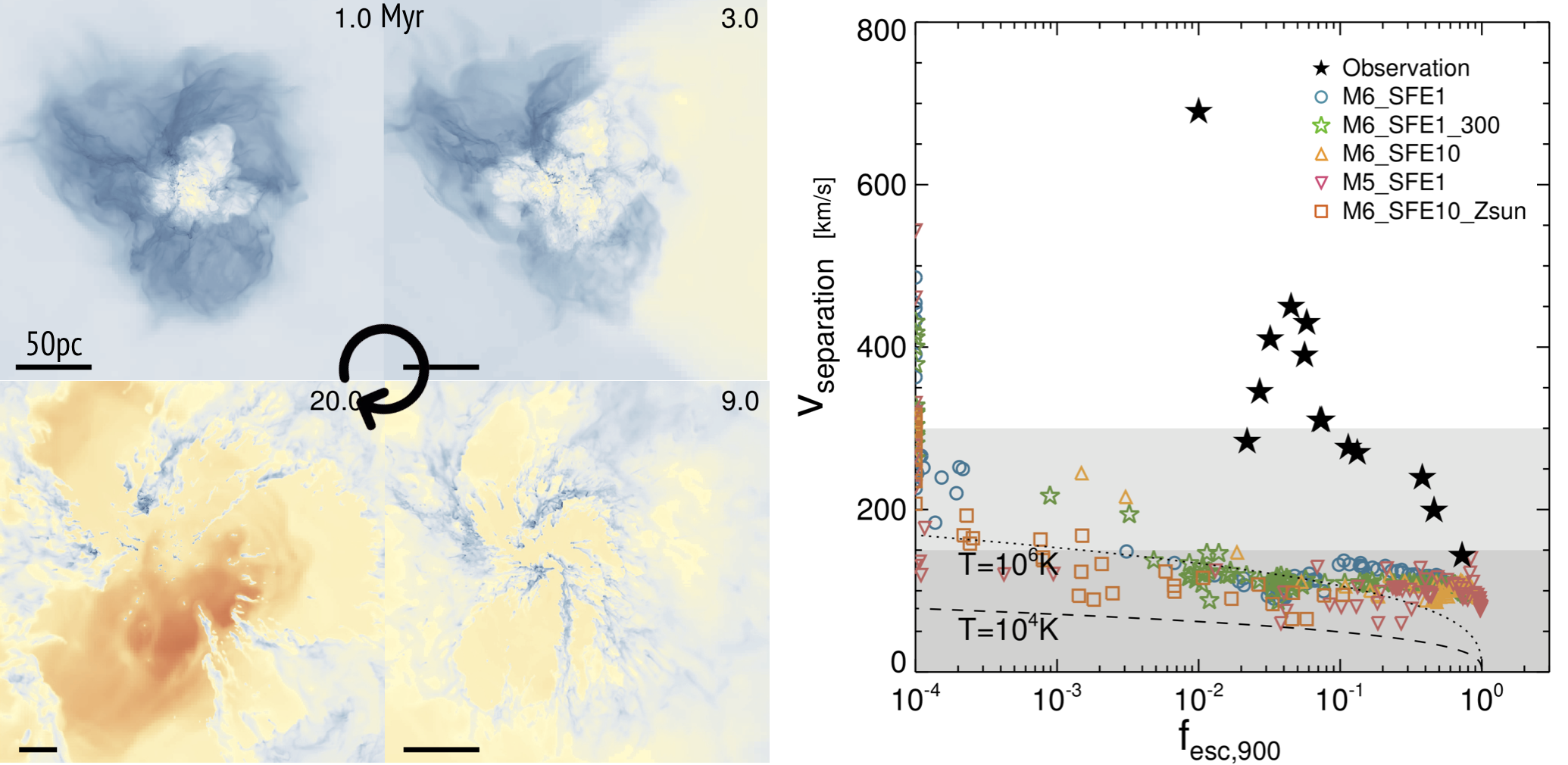- 제목
- Understanding the escape of LyC and LyA photons from turbulent clouds
- 작성일
- 2019.07.30
- 작성자
- 김태선
- 게시글 내용
-
Understanding the escape of LyC and LyA photons from turbulent clouds
Authors: Taysun Kimm, Jeremy Blaizot, Thibault Garel, Leo Michel-Dansac, Harley Katz, Joakim Rosdahl, Anne Verhamme, Martin Haehnelt
Publication: Monthly Notices of the Royal Astronomical Society, Volume 486, Issue 2, p.2215-2237
국문요약:
별을 만들어 내는 거대분자운 규모에서 Lyman continuum, Lyman alpha photon의 전파에 관한 연구.
Lyman alpha photon은 중성수소와 산란을 통해 선폭을 증가시키는데, LyA 선폭과 LyC의 탈출율의 관계를 통해
1) LyA 광자가 거대분자운 내에서 상당한 산란을 겪지만,
2) Luminous compact galaxy와 같이 별을 폭발적으로 만들고 있다고 생각되는 은하의 LyA 선폭-LyC의 탈출율을 재현하기 위해서는 성간물질과의 추가적인 산란이 필요하며, 따라서 상당부분이 다공성의 중성수소로 존재해야 함을 제시.
Abstract
Understanding the escape of Lyman continuum (LyC) and Lyman alpha (Lyα) photons from molecular clouds is one of the keys to constraining the reionization history of the Universe. Using a set of radiation-hydrodynamic simulations, we investigate how photons propagate and escape from turbulent clouds with different masses, star formation efficiencies (SFEs), and metallicities, as well as with different models of stellar spectra and supernova feedback. We find that the escape fractions in both LyC and Lyα are generally increasing with time if the cloud is efficiently dispersed by radiation and supernova feedback. When the total SFE is low (1% of the cloud mass), 0.1-5% of LyC photons leave the metal-poor cloud, whereas the fractions increase to 20-70% in clouds with a 10 per cent SFE. LyC photons escape more efficiently if gas metallicity is lower, if the upper mass limit in the stellar initial mass function is higher, if binary interactions are allowed in the evolution of stars, or if additional strong radiation pressure, such as Lyα pressure, is present. The escape fractions of Lyα photons are systemically higher (60-80%) than those of LyC photons, despite large optical depths at line centre (τ0 ̃ 1e6-1e9). Scattering of Lyα photons is already significant on cloud scales, leading to double-peaked profiles with peak separations of v_sep~400 km/s during the initial stage of the cloud evolution, while it becomes narrower than v_sep ≲ 150 km/s in the LyC bright phase. Comparisons with observations of low-redshift galaxies suggest that Lyα photons require further interactions with neutral hydrogen to reproduce their velocity offset for a given LyC escape fraction.

- 저자명
